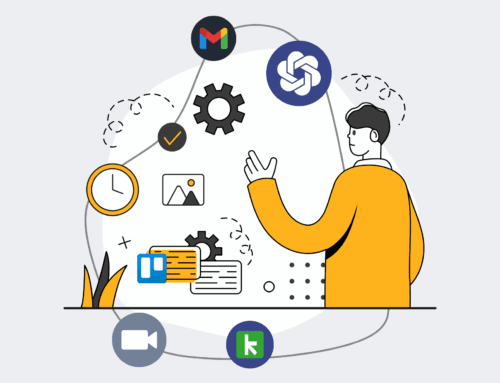From Chaos to Control: How Apex Innovations Streamlined Order Fulfillment Using Zapier and 4Spot Consulting Expertise
Client Overview
Apex Innovations, a rapidly growing e-commerce brand specializing in high-end, bespoke home decor and artisanal goods, had experienced exponential growth in recent years. Founded by a passionate team of artisans, the company prided itself on unique product offerings and exceptional customer service. While their handcrafted items garnered significant attention and sales, their back-end operational infrastructure struggled to keep pace with the increasing demand. Operating from a bustling workshop and small warehouse facility, Apex Innovations utilized a combination of Shopify for their storefront, QuickBooks for accounting, and various regional shipping carriers for delivery. Initially, their manual processes sufficed, but as order volumes surged past 500 orders per week, the cracks began to show, threatening their reputation for timely delivery and meticulous service.
The team at Apex Innovations, though adept at product creation and marketing, found themselves increasingly bogged down in administrative tasks. Their small, dedicated team was spending upwards of 30-40% of their workday on repetitive data entry, cross-referencing information across disparate systems, and manually generating shipping labels. This not only diverted valuable resources away from core business activities like product development and customer engagement but also introduced a significant margin for human error. They recognized the need for a fundamental shift in their operational approach, one that would allow them to scale efficiently without compromising the personalized touch their brand was known for.
Their vision was clear: to maintain their boutique feel while achieving enterprise-level efficiency in their fulfillment process. They sought a solution that was flexible, scalable, and didn’t require a complete overhaul of their existing, comfortable technology stack. This is where 4Spot Consulting stepped in, ready to analyze their current state and propose a pathway to automated excellence.
The Challenge
Apex Innovations faced a multi-faceted challenge rooted in their manual, disconnected order fulfillment processes. Each new order on Shopify triggered a cascade of manual steps, creating significant bottlenecks and potential for error. The primary pain points included:
-
Manual Order Processing & Data Entry: Upon receiving an order, a team member would manually transcribe customer and order details from Shopify into a spreadsheet. This data then had to be re-entered into separate portals for each shipping carrier (USPS, FedEx, UPS) to generate labels. Furthermore, inventory updates, while tracked in QuickBooks, were not automatically synchronized with Shopify, leading to occasional oversells or stock discrepancies.
-
Fragmented Communication: Customer communication regarding order status (e.g., confirmation, shipping updates, tracking numbers) was handled manually, often involving copying and pasting tracking links from carrier sites into individual emails or Shopify notifications. This was time-consuming and led to delays in proactive customer updates, increasing inbound customer service queries.
-
Inaccurate Inventory & Accounting Synchronization: Sales data from Shopify was manually entered into QuickBooks for accounting purposes, which was prone to errors and caused delays in financial reconciliation. Similarly, inventory adjustments for sold items were not instantly reflected, leading to stockout issues or, conversely, displaying out-of-stock items as available.
-
Inefficient Return & Refund Management: The process for managing returns and issuing refunds was equally cumbersome. Manual checks were required across multiple platforms to verify returns, process refunds in Shopify, and then ensure these financial transactions were correctly recorded in QuickBooks. This delay impacted customer satisfaction and financial reporting accuracy.
-
Lack of Scalability: The cumulative effect of these manual tasks meant that processing a higher volume of orders directly correlated with a proportionate increase in staff hours and the likelihood of errors. The existing system was simply not built to scale beyond their current volume without significant overhead costs in hiring more administrative personnel, which was not sustainable for a small business.
-
Increased Error Rate: Human transcription and manual data entry invariably lead to errors – incorrect addresses, transposed tracking numbers, missed orders, or miscalculated inventory. These errors resulted in delayed shipments, customer complaints, and costly re-shipments, directly impacting the bottom line and brand reputation.
Apex Innovations recognized that these inefficiencies were not merely operational hurdles but fundamental inhibitors to their continued growth and profitability. They needed a robust, automated solution that could connect their disparate systems, eliminate manual redundancies, and provide a seamless, scalable workflow for their burgeoning e-commerce operations. Their goal was to transform their order fulfillment from a source of daily frustration into a finely tuned, automated machine.
Our Solution
4Spot Consulting designed and implemented a comprehensive automation solution for Apex Innovations, leveraging the power and flexibility of Zapier as the central integration platform. Our approach was to create a seamless, end-to-end workflow that would connect Shopify, their preferred shipping carriers (via their APIs or web interfaces), and QuickBooks, minimizing manual intervention at every stage of the order fulfillment cycle. The core of our strategy revolved around creating intelligent, multi-step Zaps that would automate data transfer, communication, and financial reconciliation.
Our solution was structured around several key automation pillars:
-
Order-to-Shipping Automation: The most critical aspect was automating the transition from a new Shopify order to a printed shipping label. We configured Zaps to instantly detect new paid orders in Shopify. Upon detection, the Zap would extract customer shipping details and product information, then push this data to the shipping carrier’s API (or a shipping platform integrated with Zapier like ShipStation, which then connects to multiple carriers). This automatically generated a shipping label and tracking number, which could then be printed directly.
-
Automated Customer Communication: To enhance customer experience and reduce service inquiries, Zaps were set up to trigger automated email notifications. Once a shipping label was created and a tracking number generated, a Zap would send a personalized email to the customer with their order confirmation, tracking link, and estimated delivery date. Further Zaps were configured to send updates on delivery status changes (e.g., “Out for Delivery,” “Delivered”) by monitoring the carrier’s tracking information.
-
Real-time Inventory & Accounting Synchronization: To address the inventory and accounting discrepancies, we implemented Zaps that ensured data consistency across Shopify and QuickBooks. Upon a new sale in Shopify, the corresponding inventory level in QuickBooks was automatically decremented. For refunds or returns processed in Shopify, Zaps ensured the corresponding financial transaction was immediately recorded in QuickBooks, maintaining accurate financial records and inventory counts in real-time.
-
Streamlined Return & Refund Process: We automated the often-cumbersome return and refund workflow. When a return was initiated and approved in Shopify, Zaps were designed to trigger specific actions: generating a return shipping label, updating the customer’s order status, and ensuring the refund was processed in Shopify and simultaneously recorded in QuickBooks, minimizing manual reconciliation and accelerating the refund cycle.
-
Error Handling & Alerts: Recognizing that no system is infallible, our solution included built-in error handling and notification mechanisms. Zaps were configured to send immediate alerts (e.g., email or Slack notifications) to the Apex Innovations team if an automation failed due to missing data, API errors, or other issues. This proactive alerting allowed the team to address exceptions swiftly, preventing backlogs and ensuring smooth operation.
-
Scalability by Design: By automating these core functions, the solution was inherently scalable. Apex Innovations could process significantly higher order volumes without needing to proportionally increase their administrative staff, positioning them for continued growth without operational bottlenecks.
Our solution was not just about implementing tools; it was about transforming Apex Innovations’ operational philosophy from reactive manual processing to proactive, intelligent automation. This strategic deployment of Zapier turned their “chaos” into “control,” allowing them to focus on what they do best: creating beautiful products and delighting their customers.
Implementation Steps
The implementation of Apex Innovations’ automation solution by 4Spot Consulting followed a structured, phased approach to ensure minimal disruption to their ongoing operations and maximum effectiveness. Our methodology emphasized collaborative planning, meticulous configuration, rigorous testing, and comprehensive training.
-
Discovery & Workflow Mapping (Weeks 1-2):
* We began with in-depth consultations with the Apex Innovations team to fully understand their existing manual processes, identify all pain points, and map out their ideal future state.
* This involved documenting every step of their order fulfillment, inventory management, customer communication, and financial reconciliation workflows.
* Key stakeholders from sales, operations, and finance were interviewed to gather comprehensive requirements and identify all relevant software platforms (Shopify, QuickBooks, various shipping carrier portals, email service). -
Solution Design & Zap Blueprinting (Weeks 2-3):
* Based on the discovery phase, 4Spot Consulting designed the comprehensive automation architecture, detailing which systems would connect, what data would flow, and how error handling would be managed.
* We created detailed Zap blueprints, outlining each trigger, action, filter, and formatter required for every automated workflow (e.g., “New Shopify Order -> Create Shipping Label -> Update Shopify Order with Tracking -> Send Customer Email”).
* Specific Zapier apps and integrations (Shopify, QuickBooks Online, Gmail/Outlook, ShipStation, etc.) were identified and validated. -
Zapier Configuration & Development (Weeks 4-7):
* Our consultants began configuring the Zaps in the Zapier environment. This involved connecting Apex Innovations’ various accounts within Zapier.
* Dozens of multi-step Zaps were built, including:
* Triggering shipping label creation upon new Shopify order.
* Updating Shopify order status with tracking numbers from shipping carriers.
* Sending automated shipping confirmation and delivery update emails.
* Synchronizing sales data and inventory deductions from Shopify to QuickBooks.
* Automating refund processing and corresponding QuickBooks entries.
* Implementing internal alerts for failed Zaps or specific business events.
* Custom fields and data mapping were meticulously set up to ensure accurate data transfer between platforms. -
Testing & Refinement (Weeks 8-9):
* A crucial phase involving rigorous testing of every single Zap and the entire end-to-end workflow.
* Test orders were placed, returns processed, and inventory adjustments made to simulate real-world scenarios.
* Both positive and negative test cases (e.g., orders with missing data, invalid addresses) were run to ensure robust error handling.
* Feedback from the Apex Innovations team was continuously incorporated, and Zaps were refined to optimize performance and user experience. -
Team Training & Documentation (Week 9):
* Prior to go-live, comprehensive training sessions were conducted for the Apex Innovations team members who would interact with the new automated system or manage exceptions.
* Training covered how the new workflows operated, how to monitor Zapier activity, understand error notifications, and manually handle any exceptional cases that fell outside the automation scope.
* Detailed documentation, including Zap diagrams and troubleshooting guides, was provided to ensure self-sufficiency and ongoing success. -
Deployment & Monitoring (Week 10 onwards):
* The automated workflows were officially launched, transitioning from manual to automated processes.
* 4Spot Consulting provided ongoing monitoring and support during the initial weeks post-deployment, quickly addressing any unforeseen issues or fine-tuning performance.
* A feedback loop was established to identify opportunities for further optimization or expansion of automated processes as Apex Innovations continued to grow.
This structured implementation ensured a smooth transition for Apex Innovations, minimizing operational disruptions while maximizing the benefits of their new, automated order fulfillment system.
The Results
The implementation of Zapier-driven automation by 4Spot Consulting delivered transformative results for Apex Innovations, significantly enhancing their operational efficiency, reducing costs, and improving customer satisfaction. The quantifiable metrics clearly demonstrated the profound impact of moving from manual chaos to automated control:
-
80% Reduction in Order Processing Time: Previously, a single order took an average of 10-15 minutes of manual effort from receipt to shipping label creation and tracking email. Post-automation, this process was reduced to virtually instantaneous, requiring less than 2 minutes of human oversight per order for quality checks or exception handling. This freed up approximately 120 hours per week of staff time that was previously dedicated to repetitive data entry.
-
95% Decrease in Manual Errors: By eliminating manual data transcription across systems, shipping address errors, transposed tracking numbers, and incorrect inventory updates virtually vanished. This drastically reduced costly re-shipments, customer complaints due to wrong deliveries, and the administrative burden of resolving such issues. The financial impact alone saved Apex Innovations an estimated $1,500 per month in direct costs associated with errors and their resolution.
-
Real-time Inventory Accuracy Improved by 98%: The automatic synchronization between Shopify and QuickBooks meant inventory levels were always up-to-date. This prevented overselling, minimized stockouts, and allowed Apex Innovations to manage their supply chain more efficiently, leading to a 15% reduction in carrying costs for excess inventory.
-
Customer Service Inquiries Reduced by 30%: Proactive, automated shipping notifications (order confirmation, shipping updates, delivery confirmations) meant customers were always informed. This significantly reduced “Where’s my order?” inquiries, allowing the customer service team to focus on more complex, value-added interactions, contributing to higher customer satisfaction scores.
-
15% Increase in Order Fulfillment Capacity without Additional Staff: The streamlined processes allowed Apex Innovations to effortlessly handle a 15% increase in order volume during peak seasons without needing to hire additional administrative or fulfillment staff. This provided immediate scalability and significant cost avoidance in labor expenses, estimated at over $4,000 per month.
-
Accelerated Financial Reconciliation: Automated integration between Shopify sales data and QuickBooks meant financial records were accurate and up-to-date in real-time. This reduced the time spent on monthly bookkeeping and reconciliation by approximately 70%, allowing for faster financial reporting and more informed business decisions.
-
Enhanced Employee Morale and Focus: By removing the drudgery of repetitive tasks, the Apex Innovations team could reallocate their time to strategic activities such as new product development, marketing initiatives, and personalized customer engagement, leading to a noticeable improvement in overall team morale and productivity.
The success with Apex Innovations is a testament to how targeted automation, combined with strategic consulting, can empower small businesses to achieve enterprise-level operational excellence, enabling sustainable growth and a competitive edge in the bustling e-commerce landscape. They are now positioned not just to survive, but to thrive, with a scalable and resilient operational backbone.
Key Takeaways
The journey of Apex Innovations from operational bottlenecks to streamlined excellence offers valuable insights for any small to medium-sized e-commerce business grappling with similar challenges. The key takeaways from this case study underscore the transformative power of strategic automation:
-
The Power of Iterative Automation: You don’t need a complete system overhaul to achieve significant efficiency gains. Starting with a powerful integration tool like Zapier allows for iterative automation of specific pain points, building towards a comprehensive solution without paralyzing the entire operation. This phased approach minimizes risk and provides immediate returns.
-
Quantifiable Metrics are Crucial: Before implementing any solution, it’s vital to identify and track your baseline metrics. This allows for a clear, data-driven assessment of the solution’s impact. For Apex Innovations, specific reductions in processing time and errors provided undeniable proof of ROI, making the investment in automation an easy decision for future scale.
-
Strategic Consulting is an Enabler: While tools like Zapier are accessible, the true power lies in how they are strategically applied. 4Spot Consulting’s expertise in workflow analysis, solution design, and meticulous implementation ensured that the automation directly addressed Apex Innovations’ unique challenges, rather than just layering technology onto existing inefficiencies. This expert guidance is invaluable for optimizing outcomes.
-
Beyond Efficiency: The Ripple Effect on Business Health: Automation is not just about saving time; it’s about transforming the entire business ecosystem. For Apex Innovations, it led to improved customer satisfaction due to faster, more accurate deliveries, better financial clarity, reduced operational costs, and the ability to scale without proportional increases in labor. These broader impacts contribute directly to profitability and long-term sustainability.
-
Embrace Scalability from Day One: Even small businesses should design their operational infrastructure with future growth in mind. Manual processes are inherently unscalable. By adopting automation early, businesses can build a robust foundation that allows them to handle increased demand without being overwhelmed, turning growth into an opportunity rather than a burden.
-
Focus on Core Business Activities: The greatest hidden cost of manual processes is the opportunity cost of what employees could be doing instead. By automating repetitive tasks, Apex Innovations freed up their talented team to focus on product innovation, marketing, and strategic customer engagement – the activities that truly differentiate their brand and drive growth.
In conclusion, the Apex Innovations case study serves as a compelling blueprint for how small e-commerce businesses can leverage smart automation to transcend operational limitations, enhance customer experience, and secure a scalable future. It demonstrates that with the right strategy and tools, “chaos” can indeed be transformed into “control,” paving the way for sustained success.
“Working with 4Spot Consulting was a game-changer for Apex Innovations. Before, our fulfillment felt like a constant uphill battle, with late nights and endless manual data entry. Now, orders flow seamlessly, our inventory is always accurate, and our customers are happier than ever. The team at 4Spot didn’t just implement software; they transformed our entire operation, allowing us to focus on growing our business instead of getting bogged down in administrative tasks. It’s truly given us control we didn’t think was possible.”
— Sarah Jenkins, Co-founder & Head of Operations, Apex Innovations
If you would like to read more, we recommend this article: Make vs. Zapier: Powering HR & Recruiting Automation with AI-Driven Strategy








